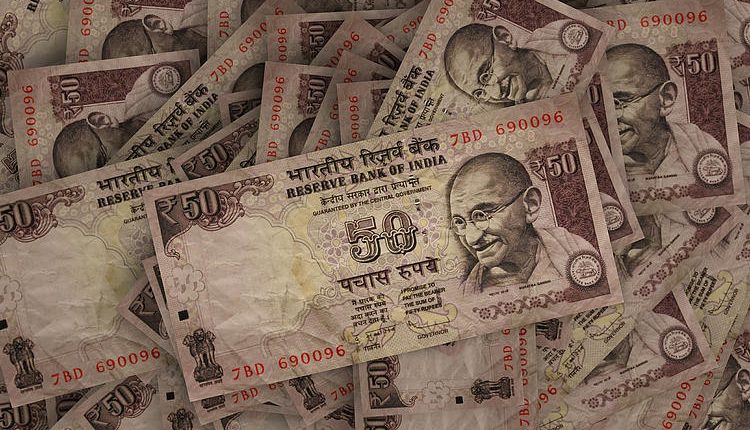- The Indian Rupee remains stable amid rising speculation of RBI interventions in open FX markets.
- Lower crude Oil prices favor the INR as India is the world’s third-largest Oil consumer and importer.
- The US Dollar depreciates as the Treasury yields continue to decline ahead of the Consumer Price Index data.
The USD/INR pair remains confined in a range around 84.00 level on Wednesday. Traders speculate potential interventions by the Reserve Bank of India (RBI) in the open FX market to support the Indian Rupee (INR) and prevent it from weakening beyond the 84.00 level.
The Indian Rupee gained support against the US Dollar (USD) due to falling crude Oil prices. This could alleviate downward pressure on the INR, as India, the world’s third-largest Oil consumer and importer, stands to benefit from lower import costs. Concerns about weakening global demand led Brent crude futures to drop to their lowest level of $64.75 per barrel since December 2021.
The US Dollar (USD) faces challenges as the US Treasury yields continue to decline ahead of the US Consumer Price Index (CPI) data scheduled to be released later in the North American hours. This inflation report may offer fresh cues regarding the potential magnitude of the Federal Reserve’s (Fed) interest rate cut in September.
Daily Digest Market Movers: Indian Rupee consolidates amid rising speculation of RBI interventions
- According to the CME FedWatch Tool, markets are fully anticipating at least a 25 basis point (bps) rate cut by the Federal Reserve at its September meeting. The likelihood of a 50 bps rate cut has slightly decreased to 31.0%, down from 38.0% a week ago.
- The first US presidential debate between former President Donald Trump and Democratic nominee Kamala Harris in Pennsylvania began with a critical focus on the economy, inflation, and economic policies. Trump remarked, “We have a terrible economy. We have inflation that is probably the worst in history. This has been a disaster for people.”
- On Tuesday, Reuters reported that six Indian bankers indicated that investors are urging the Indian federal government to increase the issuance of short-term and green bonds and to restart auctions for floating-rate bonds. These recommendations were discussed during a series of meetings about the government’s borrowing strategy for the latter half of the fiscal year.
- Chicago Fed President Austan Goolsbee remarked on Friday that Fed officials are starting to align with the broader market’s sentiment that a policy rate adjustment by the US central bank is imminent, according to CNBC. FXStreet’s FedTracker, which uses a custom AI model to evaluate Fed officials’ speeches on a dovish-to-hawkish scale from 0 to 10, rated Goolsbee’s comments as dovish, assigning them a score of 3.2.
- India’s FX Reserves reached a record high of $683.99 billion as of August 30, up from $681.69 billion previously. This surge is largely due to a substantial influx of foreign exchange into the Indian economy, spurred by robust economic growth and the long-anticipated inclusion of Indian assets in JPMorgan’s major emerging market debt index, which has enhanced foreign investment.
- “The Composite PMI for India continued to show strong growth in August, driven by accelerated business activity in the service sector, which experienced its fastest expansion since March. This growth was largely fuelled by an increase in new orders, particularly domestic orders,” said Pranjul Bhandari, Chief India Economist at HSBC.
Technical Analysis: USD/INR hovers below 84.00, upper boundary of the symmetrical triangle
The Indian Rupee trades around 84.00 on Wednesday. An analysis of the daily chart shows that the USD/INR pair is consolidating within a symmetrical triangle pattern, which suggests reduced volatility and a period of consolidation. Nevertheless, the 14-day Relative Strength Index (RSI) remains above 50, signaling a bullish trend.
On the downside, the nine-day Exponential Moving Average (EMA) at 83.92 could act as immediate support, coinciding with the lower boundary of the symmetrical triangle near 83.90. A drop below this level might signal a bearish shift, potentially exerting downward pressure on the USD/INR pair and pushing it toward the six-week low at 83.72.
On the resistance side, the USD/INR pair is testing the upper boundary of the symmetrical triangle near the 84.00 level. A breakout above this point could drive the pair toward the all-time high of 84.14, recorded on August 5.
USD/INR: Daily Chart
RBI FAQs
The role of the Reserve Bank of India (RBI), in its own words, is ‘..to maintain price stability while keeping in mind the objective of growth.” This involves maintaining the inflation rate at a stable 4% level primarily using the tool of interest rates. The RBI also maintains the exchange rate at a level that will not cause excess volatility and problems for exporters and importers, since India’s economy is heavily reliant on foreign trade, especially Oil.
The RBI formally meets at six bi-monthly meetings a year to discuss its monetary policy and, if necessary, adjust interest rates. When inflation is too high (above its 4% target), the RBI will normally raise interest rates to deter borrowing and spending, which can support the Rupee (INR). If inflation falls too far below target, the RBI might cut rates to encourage more lending, which can be negative for INR.
Due to the importance of trade to the economy, the Reserve Bank of India (RBI) actively intervenes in FX markets to maintain the exchange rate within a limited range. It does this to ensure Indian importers and exporters are not exposed to unnecessary currency risk during periods of FX volatility. The RBI buys and sells Rupees in the spot market at key levels, and uses derivatives to hedge its positions.
Read the full article here

